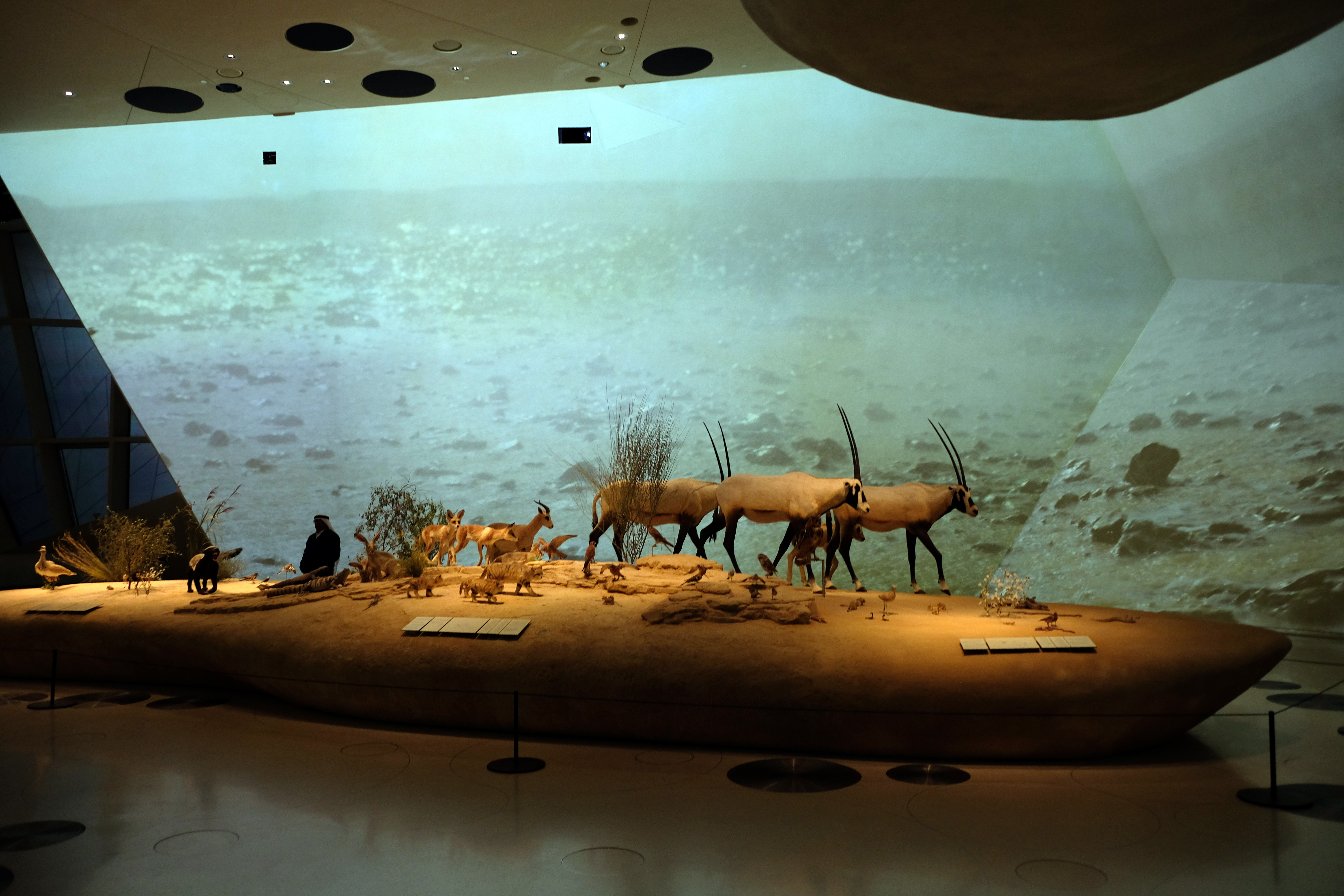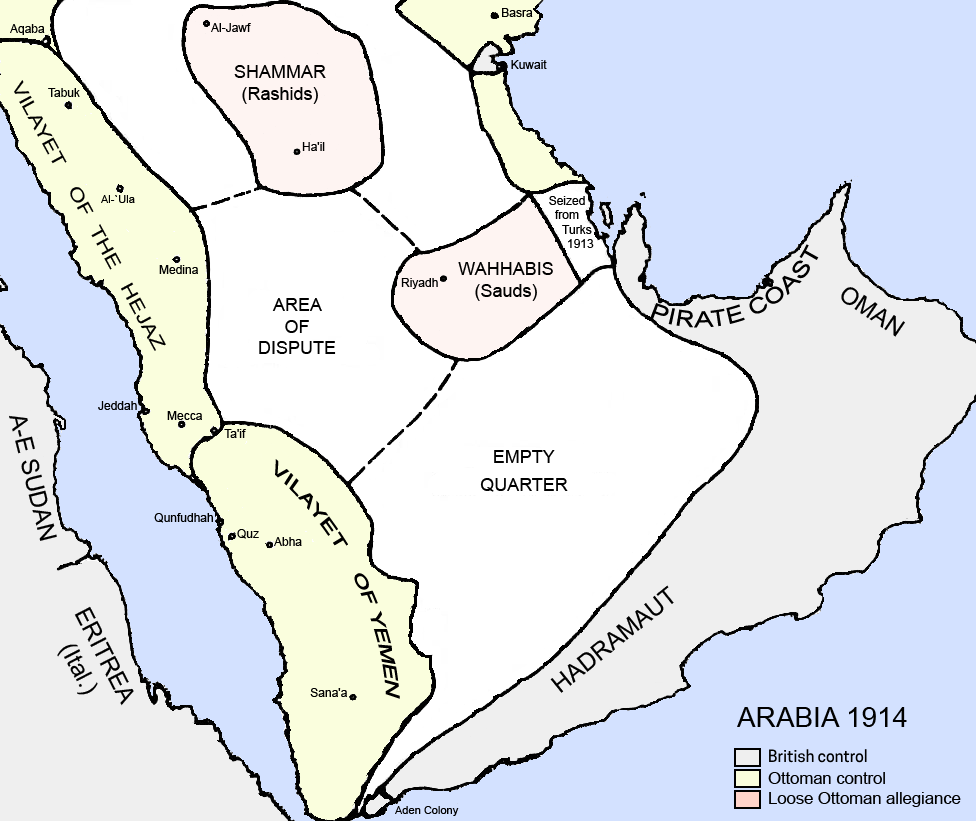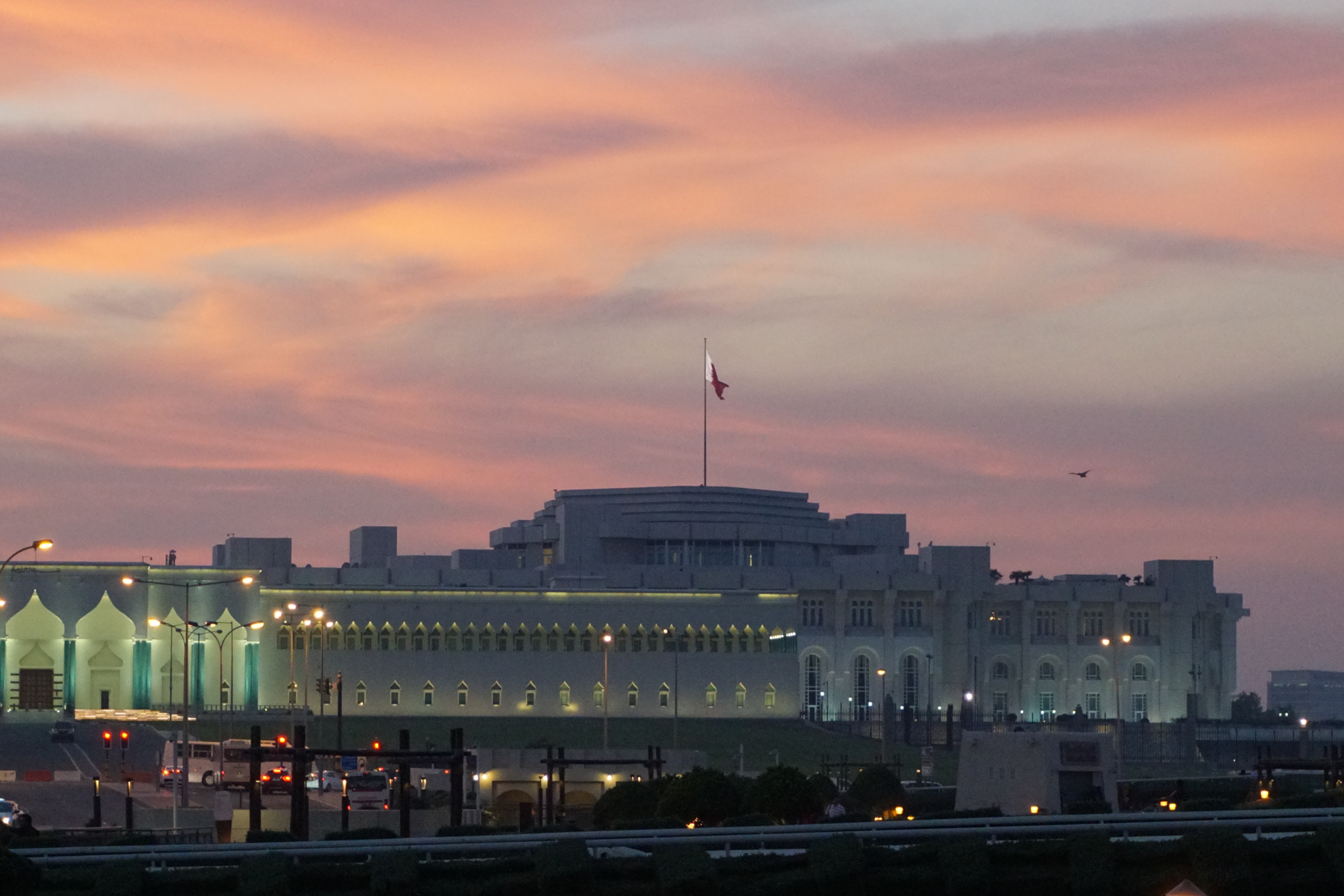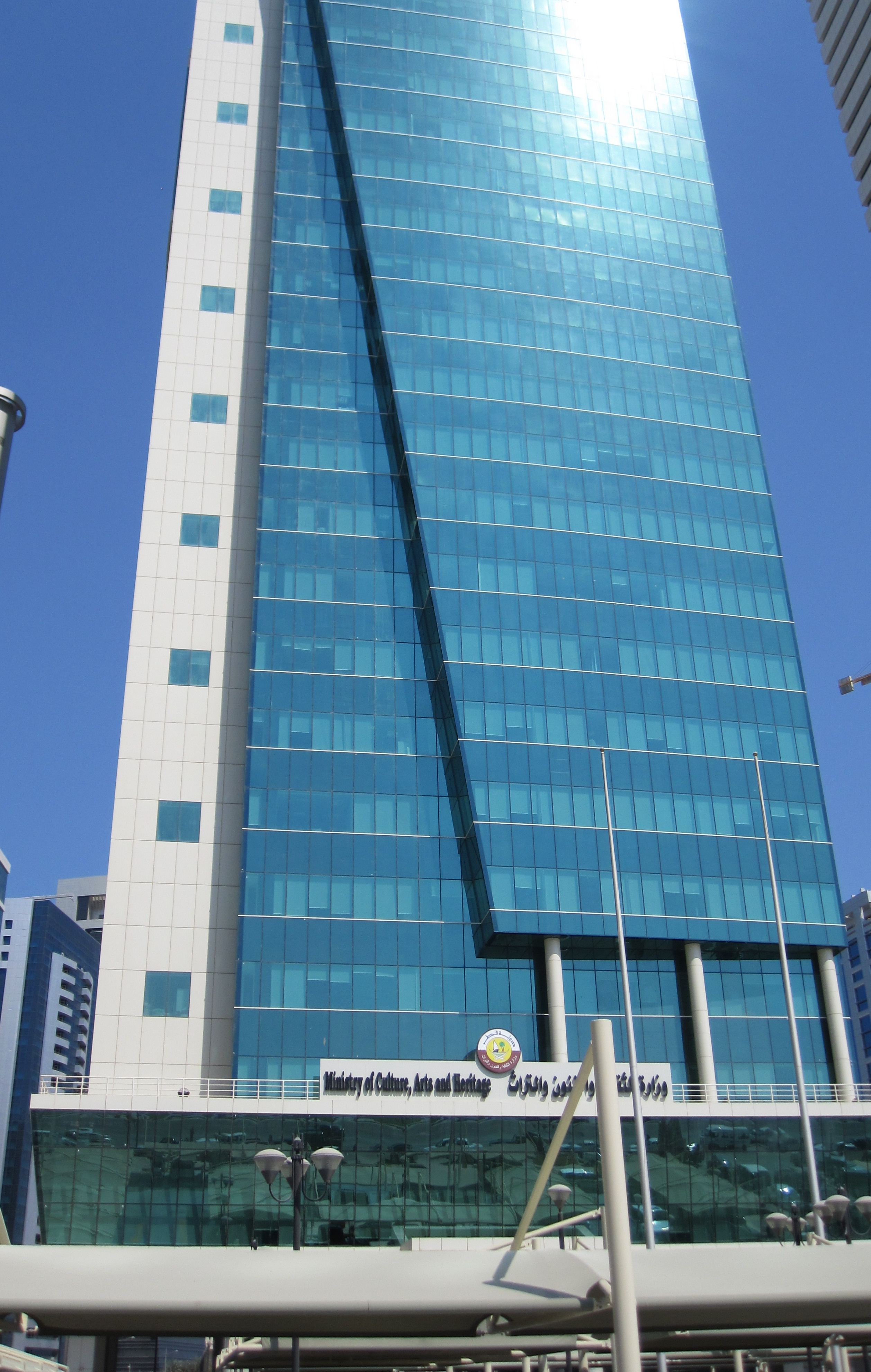|
Old Amiri Palace
The Old Amiri Palace, located in Doha, Qatar, previously served as the residence of Sheikh Abdullah bin Jassim Al Thani during the early 20th century. It became defunct in 1923 when Abdullah bin Jassim shifted his seat of government to the then-abandoned Ottoman fort of Qal'at al-Askar. In 1972, it was decided that it would be converted into a museum, culminating in the Qatar National Museum. History In late 1871, the Qatar Peninsula fell under Ottoman control after Sheikh Jassim bin Mohammed Al Thani, ruler of the peninsula, acquiesced control in exchange for protection from the Sheikhs of Bahrain and Abu Dhabi and agreed to fly the Ottoman flag at his residence. In January 1872, Qatar was formally incorporated into the Ottoman Empire as a province in Najd with Sheikh Jassim being appointed its kaymakam (sub-governor). Sheikh Jassim was allowed to continue presiding over most local affairs. Shortly after their arrival, the Ottomans established a permanent presence at Qal'at al-A ... [...More Info...] [...Related Items...] OR: [Wikipedia] [Google] [Baidu] |
Doha Palace Looking South
Doha ( ar, الدوحة, ad-Dawḥa or ''ad-Dōḥa'') is the capital city and main financial hub of Qatar. Located on the Persian Gulf coast in the east of the country, north of Al Wakrah and south of Al Khor (city), Al Khor, it is home to most of the country's population. It is also Qatar's fastest growing city, with over 80% of the nation's population living in Doha or its surrounding Suburb, suburbs. Doha was founded in the 1820s as an offshoot of Al Bidda. It was officially declared as the country's capital in 1971, when Qatar gained independence from being a History of Qatar#British protectorate .281916.E2.80.931971.29, British protectorate. As the commercial capital of Qatar and one of the emergent financial centers in the Middle East, Doha is considered a beta-level global city by the Globalization and World Cities Research Network. Doha accommodates Education City, an area devoted to research and education, and Hamad Medical City, an administrative area of medical ca ... [...More Info...] [...Related Items...] OR: [Wikipedia] [Google] [Baidu] |
Doha
Doha ( ar, الدوحة, ad-Dawḥa or ''ad-Dōḥa'') is the capital city and main financial hub of Qatar. Located on the Persian Gulf coast in the east of the country, north of Al Wakrah and south of Al Khor, it is home to most of the country's population. It is also Qatar's fastest growing city, with over 80% of the nation's population living in Doha or its surrounding suburbs. Doha was founded in the 1820s as an offshoot of Al Bidda. It was officially declared as the country's capital in 1971, when Qatar gained independence from being a British protectorate. As the commercial capital of Qatar and one of the emergent financial centers in the Middle East, Doha is considered a beta-level global city by the Globalization and World Cities Research Network. Doha accommodates Education City, an area devoted to research and education, and Hamad Medical City, an administrative area of medical care. It also includes Doha Sports City, or Aspire Zone, an international sports dest ... [...More Info...] [...Related Items...] OR: [Wikipedia] [Google] [Baidu] |
Qatar
Qatar (, ; ar, قطر, Qaṭar ; local vernacular pronunciation: ), officially the State of Qatar,) is a country in Western Asia. It occupies the Qatar Peninsula on the northeastern coast of the Arabian Peninsula in the Middle East; it shares its sole land border with Saudi Arabia to the south, with the rest of its territory surrounded by the Persian Gulf. The Gulf of Bahrain, an inlet of the Persian Gulf, separates Qatar from nearby Bahrain. The capital is Doha, home to over 80% of the country's inhabitants, and the land area is mostly made up of flat, low-lying desert. Qatar has been ruled as a hereditary monarchy by the House of Thani since Mohammed bin Thani signed a treaty with the British in 1868 that recognised its separate status. Following Ottoman rule, Qatar became a British protectorate in 1916, and gained independence in 1971. The current emir is Tamim bin Hamad Al Thani, who holds nearly all executive and legislative authority under the Constitution of Qat ... [...More Info...] [...Related Items...] OR: [Wikipedia] [Google] [Baidu] |
Abdullah Bin Jassim Al Thani
Abdullah bin Jassim bin Mohammed Al Thani ( ar, عبد الله بن جاسم بن محمد آل ثاني "Abdullah bin Jassim bin Mohammed Al Thani"), also known as Sheikh Abdullah bin Jassim Al Thani or Sheikh Abdullah bin Qassim Al Thani, was the Emir of Qatar. He was born in 1880 in Doha, the capital city of Qatar. He then abdicated in favour of his crown prince and second son, Sheikh Hamad bin Abdullah Al Thani, in 1940. Sheikh Hamad died eight years later and Sheikh Abdullah assumed office once again until 1949, when he stepped down from office in favour for his eldest son, Sheikh Ali bin Abdullah Al Thani. Oil was also discovered for the first time during his rule. Biography Early life and reign Sheikh Abdullah bin Jassim Al Thani was born in the year 1880, in Doha, the capital city and state of Qatar, as a son of Sheikh Jassim bin Mohammed Al Thani. Although his mother is still unknown, he was born along with his eighteen siblings, with him being the 5th eldest amon ... [...More Info...] [...Related Items...] OR: [Wikipedia] [Google] [Baidu] |
Qatar National Museum
The National Museum of Qatar is a national museum in Doha, Qatar. The current building opened to the public on 28 March 2019, replacing the previous building which opened in 1975. The building was designed by architect Jean Nouvel who was inspired by the desert rose crystal, which can be found in Qatar. The museum site includes Sheikh Abdullah bin Jassim Al Thani's Palace, which is the heart of the Qatari national identity. As of 2013, the director of the museum is Sheikha Amna. Collection A tour of the museum takes visitors through a loop of galleries that address three major, interrelated themes. The galleries are loosely arranged in chronological order, beginning with exhibitions on the natural history of the desert and the Persian Gulf, artefacts from Bedouin culture, historical exhibitions on the tribal wars, the establishment of the Qatari state, and finally the discovery of oil to the present. The displays and installations that explore these themes present audiovisual ... [...More Info...] [...Related Items...] OR: [Wikipedia] [Google] [Baidu] |
Jassim Bin Mohammed Al Thani
Sheikh Jassim bin Mohammed Al Thani ( ar, جاسم بن محمد آل ثاني; c. 1825 – 17 July 1913), also known as "The Founder", was the founder of the State of Qatar. He had a total of 56 children, 19 sons and 37 daughters. Early life and governance Although the exact date of his birth is unknown, Jassim bin Mohammed Al Thani was born around 1825. Raised in Fuwayrit, Qatar, Jassim claimed to be descended from the Tamim tribe, as he was the eldest son of Mohammed bin Thani. Al Thani acquired full capability in the management of the country's affairs during his youth and guided its policies and steered the country during a period that witnessed major events and changes. Jassim, as a result of engaging in politics while serving as deputy to his father, acquired political experience. He later moved to Al Bidda with his father when he was around twenty-one years old, where he emerged among his mates as a young leader, which he later illustrated as he fended off Qatar's inv ... [...More Info...] [...Related Items...] OR: [Wikipedia] [Google] [Baidu] |
Najd Sanjak
The sanjak of Najd ( ar, لواء نجد) was a sanjak (second-level province) of the Ottoman Empire. The name is considered misleading, as it covered the al-Hasa region, rather than the much larger Najd region. It was part of Baghdad Vilayet from June 1871 to 1875, when it became part of the Basra Vilayet. The mutasarrif was located in Hofuf, which was garrisoned by up to 600 men, the largest Ottoman force in the area. History The opening of the Suez Canal in 1869 gave a new strategic importance to this region, stoking Ottoman interests in establishing effective control as a result of the revival of trade. In 1871, Midhat Pasha invaded al-Hasa and restored Ottoman control. When he incorporated this desert region into the Ottoman realm, Midhat Pasha had granted the local notables complete exemptions from taxation, except for the zakat. In 1872 Qatar was designated a kaza under the Sanjak of the Najd. In March 1893, at the Battle of Al Wajbah (10 miles west of Doha), Shaikh J ... [...More Info...] [...Related Items...] OR: [Wikipedia] [Google] [Baidu] |
Kaymakam
Kaymakam, also known by many other romanizations, was a title used by various officials of the Ottoman Empire, including acting grand viziers, governors of provincial sanjaks, and administrators of district kazas. The title has been retained and is sometimes used without translation for provincial or subdistrict governors in various Ottoman successor states, including the Republic of Turkey, Northern Cyprus, Iraq, and Lebanon. Names The title has been romanization, romanized in English language, English since 1645 with extremely numerous spelling variations. The most common present-day forms are kaymakam, kaimakam, and qaimaqam. The modern Turkish language, Turkish term is , from Ottoman Turkish ''kaymakam'' (), from Arabic language, Arabic ''qāʾim maqām'' (), meaning "stand in" or "deputy". History Ottoman Empire In the Ottoman Empire, the title of ''kaymakam'' (known either as ''sadâret kaymakamı'' or as ''kaymakam pasha'') was originally used for the official depu ... [...More Info...] [...Related Items...] OR: [Wikipedia] [Google] [Baidu] |
Amiri Diwan Of The State Of Qatar
The Amiri Diwan of the State of Qatar is the sovereign body and the administrative office of the Amir. It is the official workplace and office of the Amir of the State of Qatar. The Amiri Diwan represents the figurative and bureaucratic center of Qatar. The building also hosts the office of the Deputy Amir and the Prime Minister. History The site that is currently the Amiri Diwan was previously Al Bidda Fort, built in the 18th century. It was later designated as a military fort called Qal'at Al-Askar during the Ottoman period in Qatar. After the Ottomans withdrew from Qatar, the building became the official office of Qatar's Rulers, and was renamed Doha Palace, also sometimes being known as Qal'at Al-Shouyoukh (Palace of the Sheikhs). The fort was officially renamed to Amiri Diwan in 1971 after Qatar gained its independence from the United Kingdom and the title Amir replaced the title Ruler of the State of Qatar. Activities Among the duties of the Amiri Diwan are: *Updating the ... [...More Info...] [...Related Items...] OR: [Wikipedia] [Google] [Baidu] |
Khalifa Bin Hamad Al Thani
Sheikh Khalifa bin Hamad bin Abdullah bin Jassim bin Mohammed Al Thani ( ar, خليفة بن حمد آل ثاني; 17 September 1932 – 23 October 2016) was the Emir of Qatar from 27 February 1972 until he was deposed by his son Hamad bin Khalifa on 27 June 1995. He died during the reign of his grandson, the current Emir, Tamim bin Hamad Al Thani. Early years Sheikh Khalifa was born in Doha in 1932. He was the son of Hamad bin Abdullah Al Thani and grandson of Abdullah bin Jassim Al Thani. Career In 1957, Khalifa was appointed Minister of Education. Then, he was appointed Deputy Emir. He was named as the heir apparent on 24 October 1960. In the 1960s, he also served as Prime Minister and Minister of Finance. On 22 February 1972, Sheikh Khalifa became the Emir of Qatar, seizing power from his cousin, Emir Ahmad bin Ali Al Thani in a bloodless coup d'état. While many Western news outlets referred to it as an overthrow, the Qatari population merely considered it to be a ... [...More Info...] [...Related Items...] OR: [Wikipedia] [Google] [Baidu] |
Ministry Of Culture, Arts And Heritage (Qatar)
The Ministry of Culture ( ar, وزارة الثقافة , nativename_a =) is the ministry responsible for administering Qatar's cultural policies and programs. Its responsibilities include organizing cultural events, promoting cultural cooperation, publishing local literature and raising awareness of Qatar's culture. As of 2016, the ministry also presides over sport and youth club affairs. The current minister is Abdulrahman bin Hamad bin Jassim bin Hamad Al Thani. History Qatar's culture ministry has undergone several phases through its history until its official establishment in 2008. Prior to that year, the country's cultural policies were administered in tandem with other government ministries. In 1975, the first government department for culture was formed as part of the Ministry of Information. The ministry eventually integrated as the Ministry of Information and Culture in 1989. During Hamad Bin Abdulaziz Al-Kawari tenure as Minister of Information and Culture from 1992 ... [...More Info...] [...Related Items...] OR: [Wikipedia] [Google] [Baidu] |






